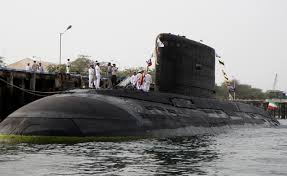
Iran’s talking tough again, threatening to close the Strait of Hormuz in the event of an attack. This is not the first time such threats have been made. Furthermore, when Iran mined USS Samuel B. Roberts (FFG 58) during Operation Earnest Will, the United States delivered quite the beat-down to the mullahs’ military forces in Operation Praying Mantis. But it raises the question of whether Iran could carry out its threats. Iran’s threat cannot be treated as idle, given that they did try to shut down the Strait of Hormuz during the Iran-Iraq War.
Currently, the Iranian Navy has at least five frigates, three Kilo-class submarines, fifty-four guided-missile patrol boats, and at least sixteen mini-submarines. It is a force that could be beaten by the United States Navy – much as was done in 1988 – but that task may be tougher now than it was back then. To understand why just take a look at the map.
At less than sixty miles wide for most of its length, Iran can not only count on its naval forces to attack tankers in the Strait of Hormuz, but also truck-mounted and fixed-position anti-ship missile batteries on the coast, primarily consisting of the C-802 and C-201 missiles. Iran’s control of Qeshm and Larak Islands adds further reach to shore-based missiles as well. These bases could also be protected with surface-to-air missiles like the SA-10 “Grumble” that Iran has been trying to buy from Russia for years.
With missiles flying in at 685 miles per hour, even an Aegis vessel will have some problems protecting a supertanker from being hit by an anti-ship missile. The good news is that supertankers are very big, and as a result, they are very tough. Even an 1100-pound warhead from a C-201 won’t sink a supertanker. But it will create one hell of a mess. The hit will cause a fire, and it will send oil spilling out. In the “Tanker War” that took place during the Iran-Iraq War, over 500 commercial vessels were hit
